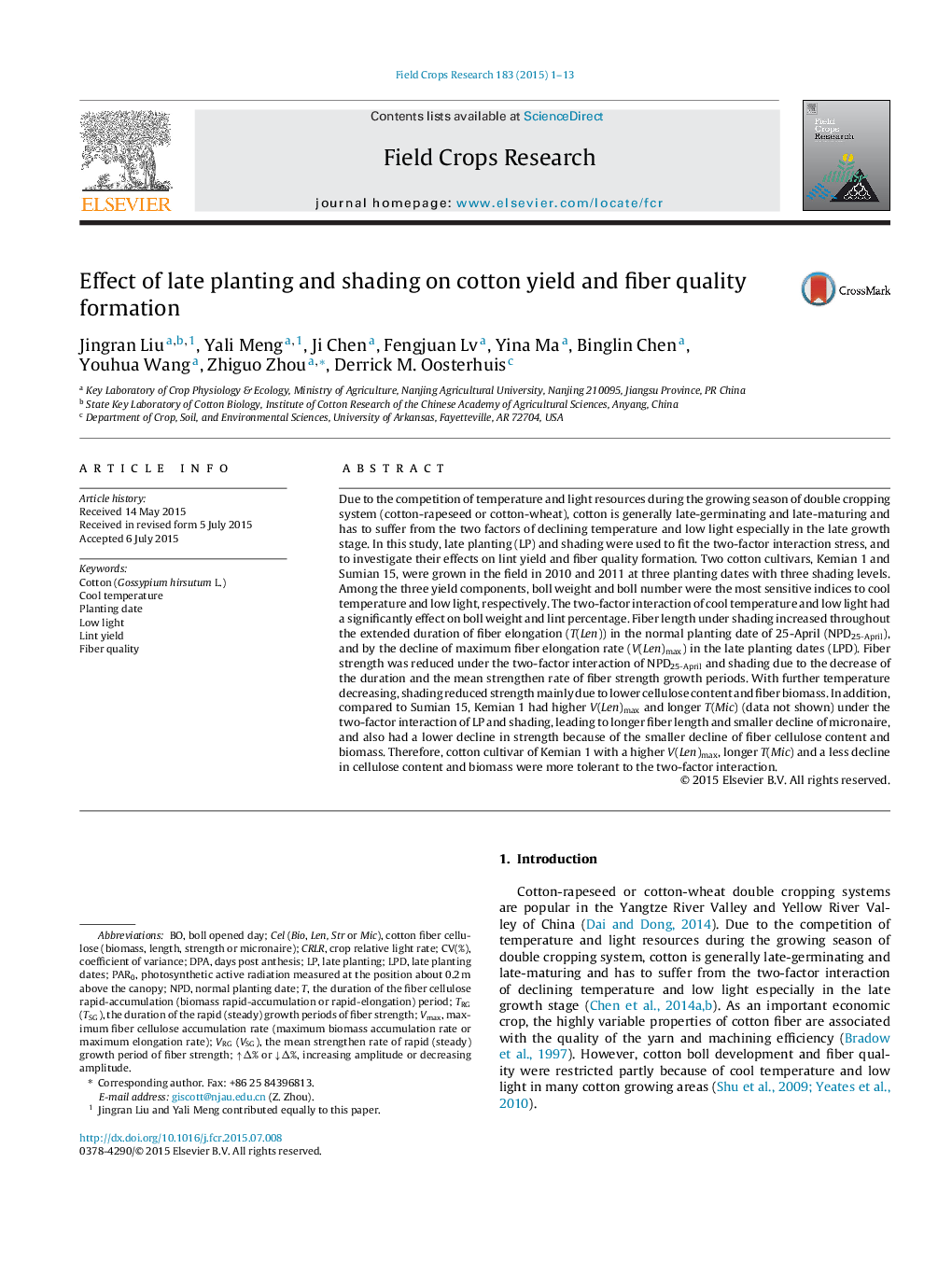| کد مقاله | کد نشریه | سال انتشار | مقاله انگلیسی | نسخه تمام متن |
|---|---|---|---|---|
| 6374668 | 1624680 | 2015 | 13 صفحه PDF | دانلود رایگان |
عنوان انگلیسی مقاله ISI
Effect of late planting and shading on cotton yield and fiber quality formation
ترجمه فارسی عنوان
تأثیر کاشت دیر و سایه بر عملکرد پنبه و شکل گیری کیفیت فیبر
دانلود مقاله + سفارش ترجمه
دانلود مقاله ISI انگلیسی
رایگان برای ایرانیان
کلمات کلیدی
موضوعات مرتبط
علوم زیستی و بیوفناوری
علوم کشاورزی و بیولوژیک
علوم زراعت و اصلاح نباتات
چکیده انگلیسی
Due to the competition of temperature and light resources during the growing season of double cropping system (cotton-rapeseed or cotton-wheat), cotton is generally late-germinating and late-maturing and has to suffer from the two factors of declining temperature and low light especially in the late growth stage. In this study, late planting (LP) and shading were used to fit the two-factor interaction stress, and to investigate their effects on lint yield and fiber quality formation. Two cotton cultivars, Kemian 1 and Sumian 15, were grown in the field in 2010 and 2011 at three planting dates with three shading levels. Among the three yield components, boll weight and boll number were the most sensitive indices to cool temperature and low light, respectively. The two-factor interaction of cool temperature and low light had a significantly effect on boll weight and lint percentage. Fiber length under shading increased throughout the extended duration of fiber elongation (T(Len)) in the normal planting date of 25-April (NPD25-April), and by the decline of maximum fiber elongation rate (V(Len)max) in the late planting dates (LPD). Fiber strength was reduced under the two-factor interaction of NPD25-April and shading due to the decrease of the duration and the mean strengthen rate of fiber strength growth periods. With further temperature decreasing, shading reduced strength mainly due to lower cellulose content and fiber biomass. In addition, compared to Sumian 15, Kemian 1 had higher V(Len)max and longer T(Mic) (data not shown) under the two-factor interaction of LP and shading, leading to longer fiber length and smaller decline of micronaire, and also had a lower decline in strength because of the smaller decline of fiber cellulose content and biomass. Therefore, cotton cultivar of Kemian 1 with a higher V(Len)max, longer T(Mic) and a less decline in cellulose content and biomass were more tolerant to the two-factor interaction.
ناشر
Database: Elsevier - ScienceDirect (ساینس دایرکت)
Journal: Field Crops Research - Volume 183, November 2015, Pages 1-13
Journal: Field Crops Research - Volume 183, November 2015, Pages 1-13
نویسندگان
Jingran Liu, Yali Meng, Ji Chen, Fengjuan Lv, Yina Ma, Binglin Chen, Youhua Wang, Zhiguo Zhou, Derrick M. Oosterhuis,
